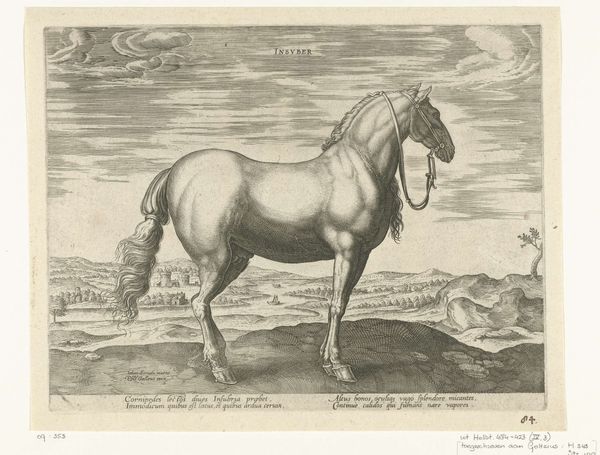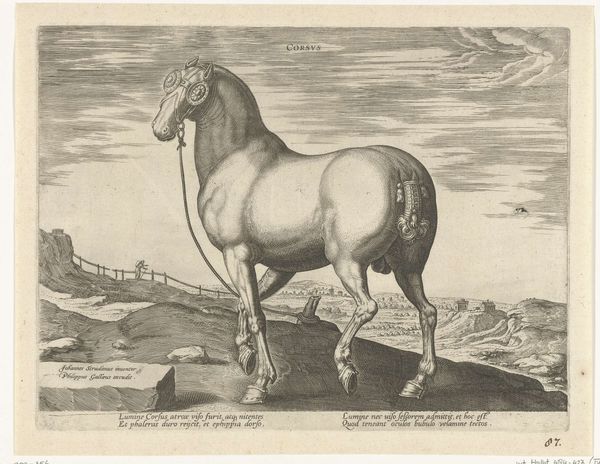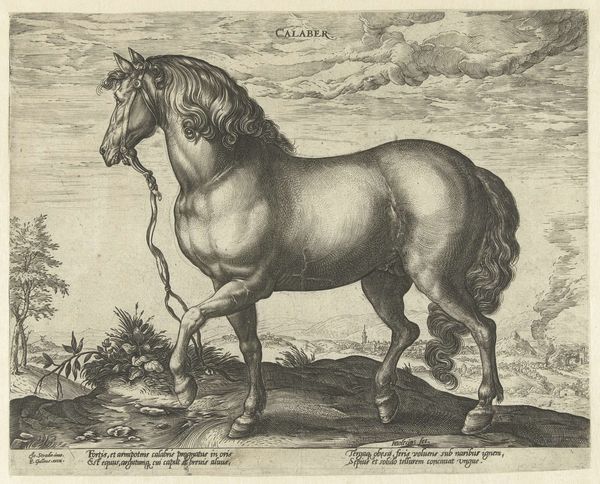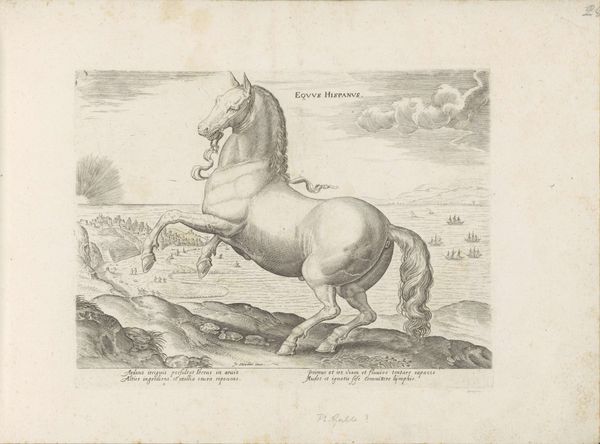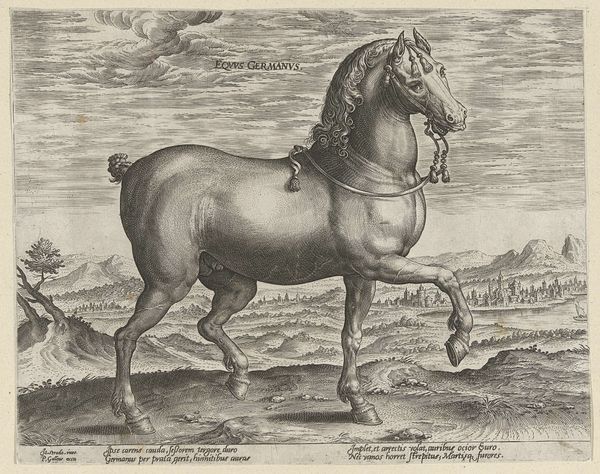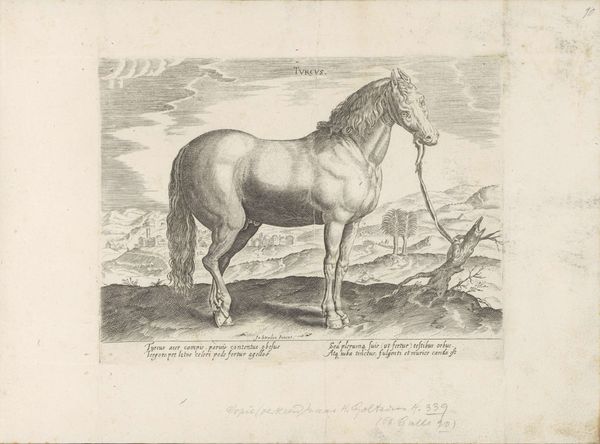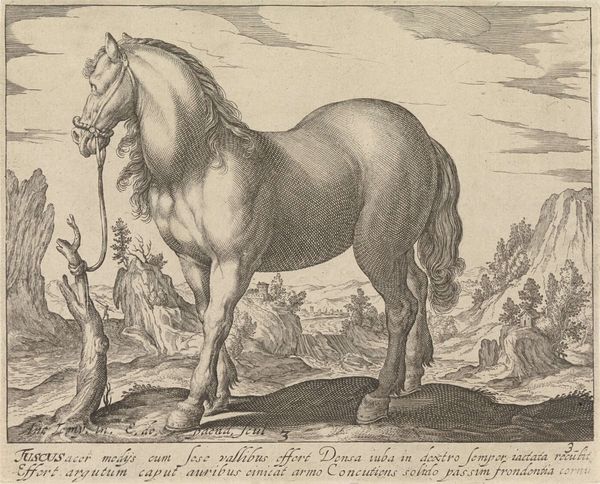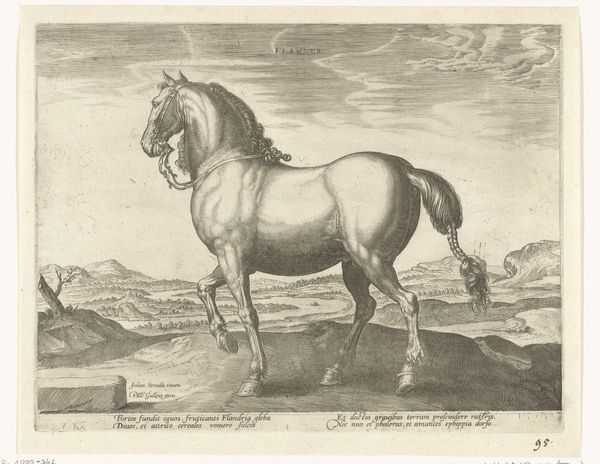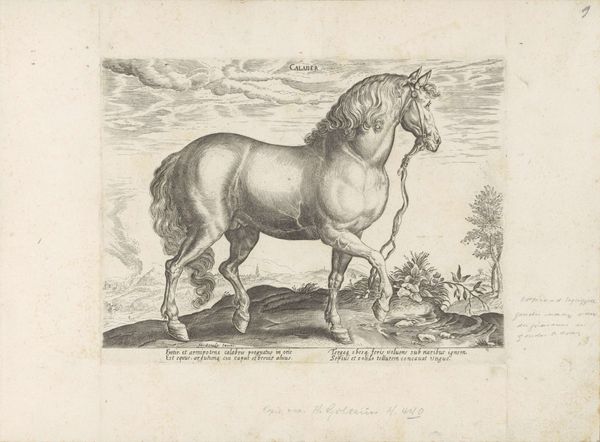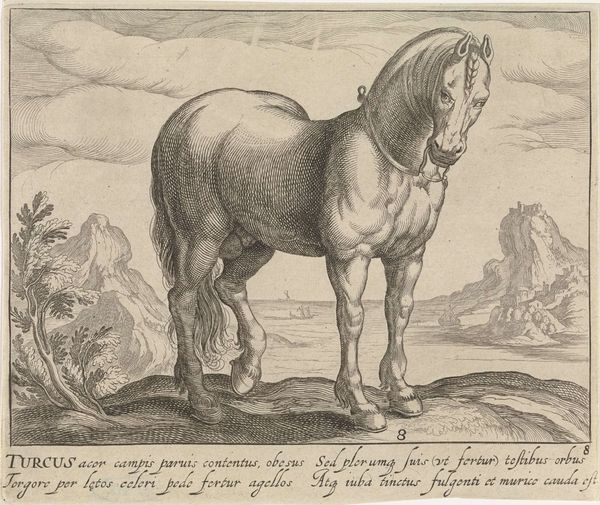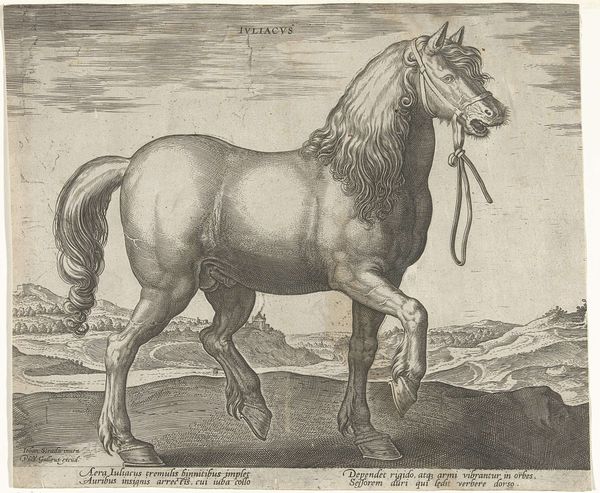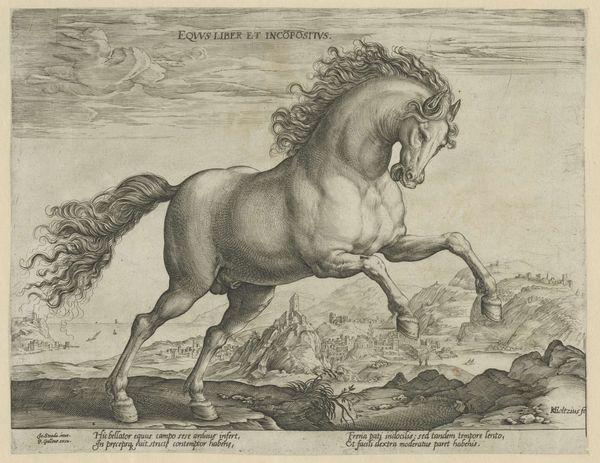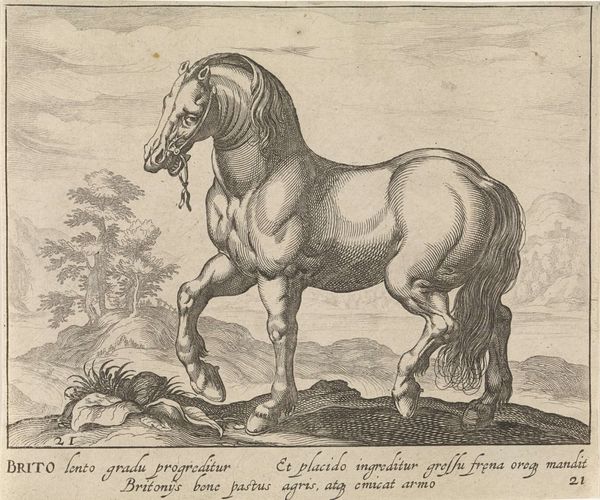
print, engraving
#
animal
# print
#
old engraving style
#
landscape
#
figuration
#
11_renaissance
#
pencil drawing
#
horse
#
line
#
engraving
#
realism
Dimensions: width 276 mm, height 208 mm
Copyright: Rijks Museum: Open Domain
Curator: What an elegant engraving! This is "Paard uit Turkije," or "Horse from Turkey," by Hendrick Goltzius, created around 1578 to 1582. It's a really striking piece held here at the Rijksmuseum. Editor: My first impression is one of stark, almost anatomical precision. The musculature is so carefully delineated, especially around the shoulders and haunches. You can almost feel the weight of the animal through the dense network of lines. Curator: Indeed. Horses, especially those of Turkish or Arabian descent, held symbolic importance in Renaissance Europe. They represented status, power, and were often associated with nobility and military prowess. This image would have tapped into those pre-existing ideas. Editor: It also showcases the engraver’s skill, wouldn’t you say? To manipulate the copper plate and control the depth and fineness of each line...It shows the mastery of printmaking as a technique. Curator: Absolutely. Look at the lines Goltzius used to suggest the horse's coat. They aren’t just descriptive; they almost give the impression of movement and shimmering light, highlighting the inherent 'prestige' of the 'Turkish Horse' itself. Editor: It strikes me that the backdrop, that suggestive but simple landscape, plays a crucial role. It almost appears the horse is positioned for viewing in the same regard as architecture, displayed like prized materiality. Curator: Yes, by situating this noble animal within the sweeping scenery, the viewer could easily envision it traversing the rolling hills toward faraway empires, even those whispered in cultural lore, expanding its cultural significance even more. Editor: Seeing such meticulous detail makes you wonder about the whole enterprise of equestrian portraiture during that time. The process of representing an animal this way speaks volumes about what society deemed worthy of admiration, right down to the ink and paper used. Curator: Precisely. From symbolism to execution, this piece offers a remarkable peek into the cultural landscape of the late 16th century, doesn't it? Editor: It does indeed, bringing the relationship between material artistry and historical significance to light once again.
Comments
No comments
Be the first to comment and join the conversation on the ultimate creative platform.
